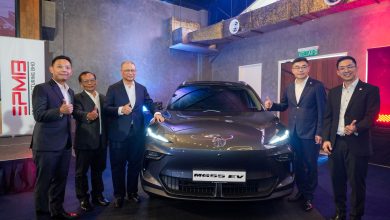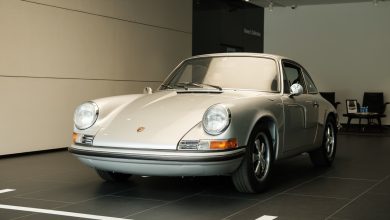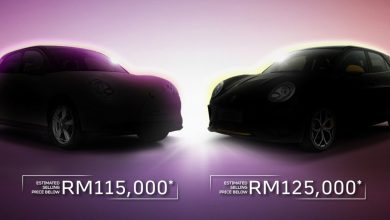Track Ready Donkervoort D8 GTO-JD70 R Unveiled

A surprisingly good value track-only offering by Donkervoort, the Dutch supercar manufacturer.
When billionaires with cash to splash are on the lookout for a track weapon, they usually head to the established marques to satisfy their adrenaline needs. Nearly every supercar manufacturer out there now offers some sort of track-focused car for an absurd amount of money. However for the billionaire looking for a track toy with the best bang-for-your-buck, might I suggest the new Donkervoort D8 GTO-JD70 R.

Donkervoort might not exactly be a household name, even among automotive enthusiasts, but they have been quietly producing cars with hypercar-rivalling performance stats. The latest of which is its new track-only edition of its already quite mental D8 GTO-JD70 sports car.
Called the D8 GTO-JD70 R, it might not be the prettiest car in the world, and the name is certainly a mouthful, but there is no doubt that this latest offering from the Dutch boutique sports car manufacturer is certainly a monster of a track weapon. A fact that is proven by the JD70 R’s ability to lap the Spa-Francorchamps Grand Prix circuit a full three seconds faster than a Koenigsegg Regera hypercar.

To achieve this monumental feat, the Dutch boutique supercar manufacturer has focused on 5 key areas of improvement over the standard road-going variant. These are the gearbox, the brakes, the steering, the safety package and the tyres.
Still powered by the same 2.5 litre turbocharged five-cylinder that delivers 415 hp and 513 lb-ft of torque, this R-suffixed track car now gains a six-speed Quaife sequential transmission to allow for quicker shift times. Shorter ratios also help to keep the Audi Sport derived power plant in its sweet spot on track.
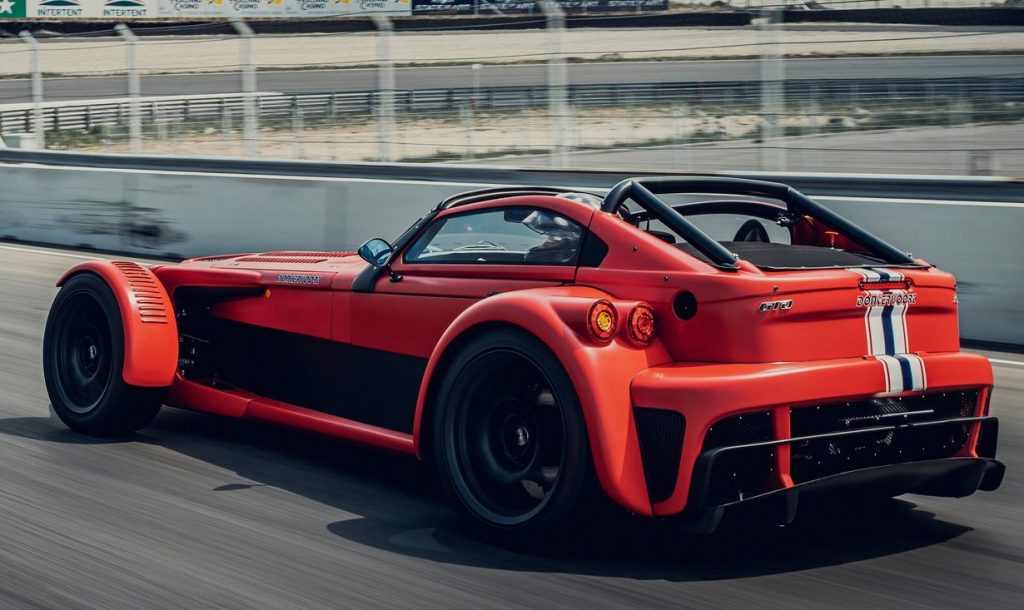
Moving onto the topic of handling, this hyper-light hypercar is now fitted with wide-track suspension, featuring four-way adjustable Intrax dampers that are 20% stiffer than stock and stiffer anti roll bars. New stiffer custom springs also lower the ride height of the R by 20 mm.
A new ultra light power steering system meanwhile is available to be fitted on an ultra-short steering rack, for maximum agility out on track. To ensure it stays on track, an ultra-sticky custom set of racing slicks have been developed by Nankang specifically for the R.
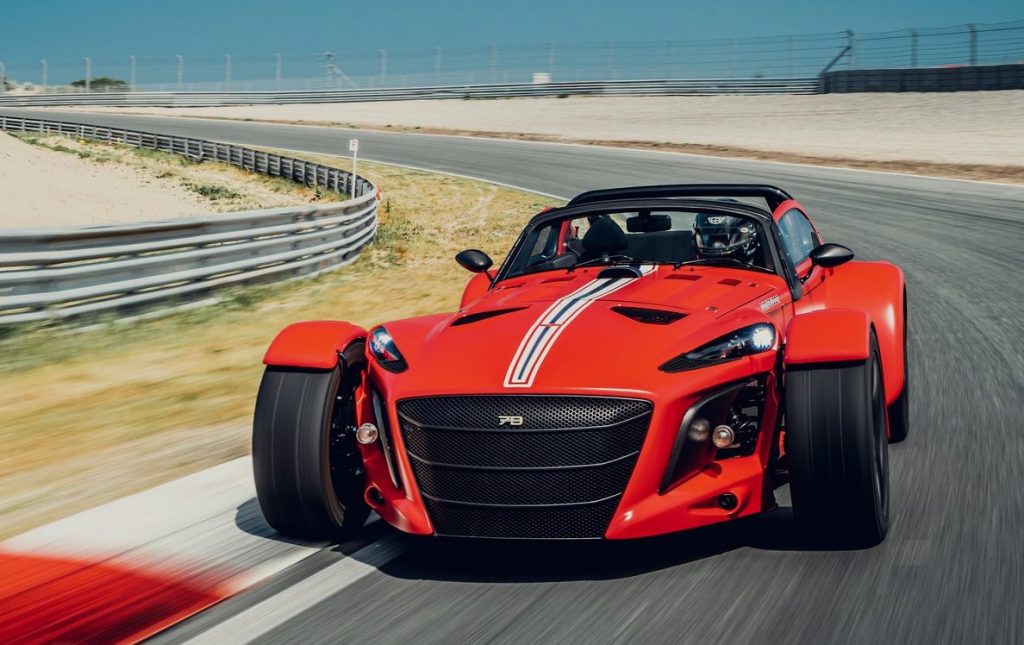
As for bringing it all to a stop, the highlight of the R in this department will probably be the addition of the Bosch M5 Clubsport anti-lock braking (ABS) system. Featuring a 12-step adjustment, it is can be finely calibrated perfectly suit each driver, thus maximising the driver’s confidence in pushing this machine around a track. Furthermore, this racing Donkervoort also features racing brake pads that clamp onto the wave-patterned disks with the help of six-pot callipers all round.
Most importantly though is perhaps the safety improvements made on the D8 GTO-JD70-R. Side impact protection has been improved thanks to a 60% increase in the use of Ex-Core carbon-fibre on the body. A carbon fibre race seat along with a Luke six-point harness is also standard on the Donkervoort, as well as a Bilster Berg roll cage.
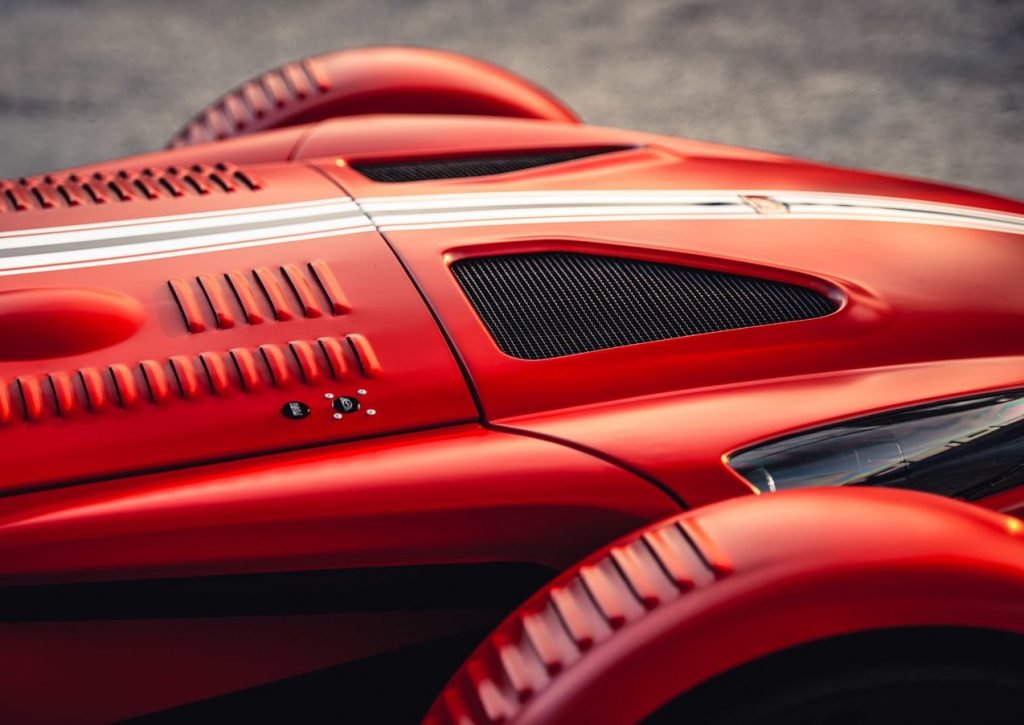
An FIA-homologated bladder style fuel tank and a full FIA race homologation fire extinguisher system is also standard, as is a new tow strap up front to complement the new tow hook out the back. This all equates to the Donkervoort being compliant in all European circuits, even passing notoriously tough French FFSA regulations for safety.
However, while all these improvements make the Donkervoort a monster on track, it still doesn’t answer the question as to why is it the most bang-for-your-buck hypercar hunter. Well, that comes down to the cost of the R, and perhaps more appealingly is the full trackside support that are on offer with the purchase of this Dutch track toy.
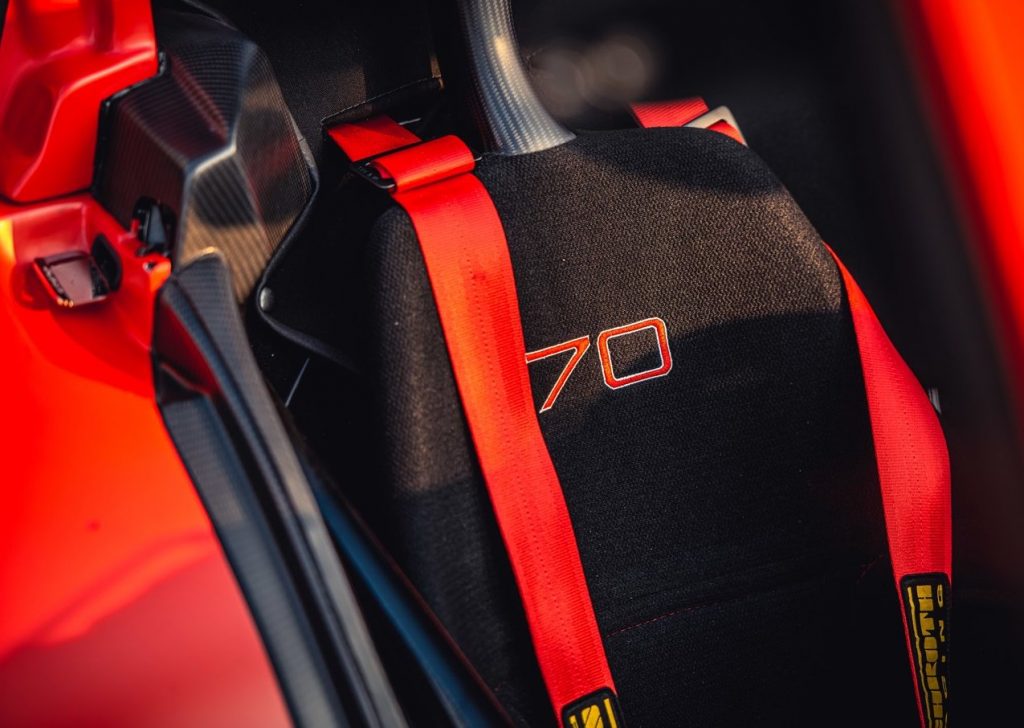
Costing just €198,000 (RM 966,000) before tax, the R is offered with a stunning array of track side services to complement the entire Donkervoort racing experience. As touted by the manufacturer ‘full trackside support, from transport to catering and from spare parts, tyres and mechanical assistance to driver coaching’ is available from Donkervoort itself.
Even more surprisingly however is that running this track toy wouldn’t necessarily be all that expensive, as Donkervoort has thought about the maintenance cost too when creating this track weapon. As such, the slicks are predicted to last 1,000 km, while the brakes are supposed to last for 5,000 km. Being steel too, they don’t cost as much as the carbon ceramics such as on the other track-focused supercar.
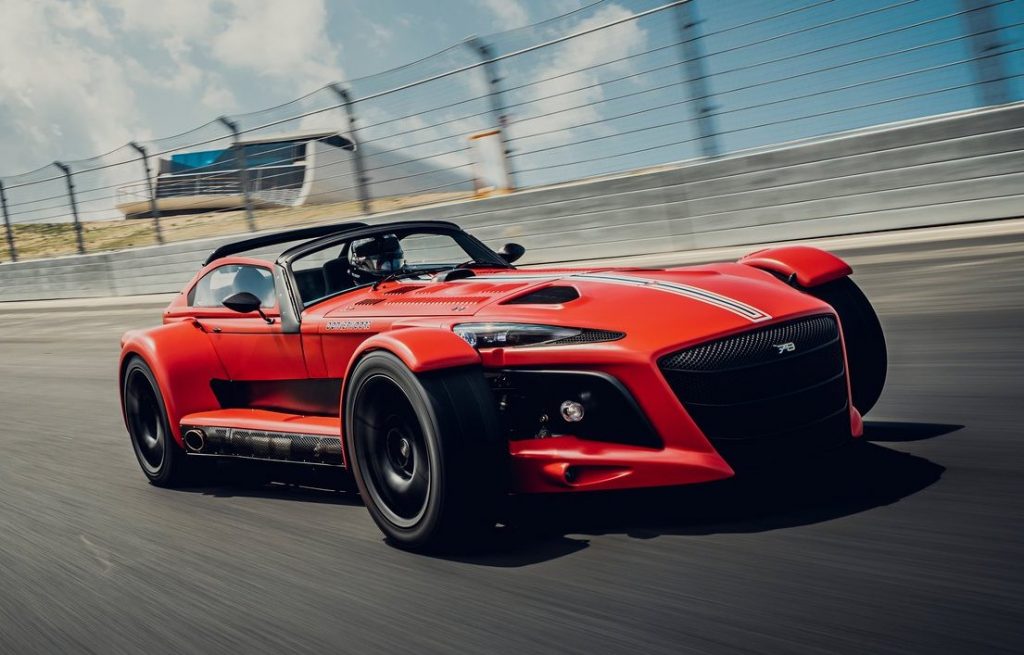
So for those who can look past the relatively unknown badge, and possibly the looks, this is perhaps the best-value track car out there. Moreover, being a relatively small manufacturer, the community would undoubtably be quite a close knit one. Thus allowing for a big fish in a small pond feeling, rather than a small fish in a big pond when joining some of the other manufacturers.

PRESS RELEASE: Stronger, faster and safer, the new D8 GTO-JD70 R has arrived as a track-only Donkervoort with hypercar performance and technology for only supercar pricing.
If the D8 GTO JD70 is the very beating heart of Donkervoort Automobielen, then the JD70 R is its hard-core, uncompromising soul, taking the JD70 concept into areas of performance it can only reach on race circuits.
Where the JD70 was launched this year to honour the 70th birthday of Donkervoort’s founder, Joop Donkervoort, the JD70 R has been developed to embarrass other sports car and their owners and to make its own drivers feel like track superstars.
It’s the fastest, most attacking, least compromised Donkervoort ever engineered, capable of smashing track records, winning races and doing it all on a fraction of the fuel, tyre and brake budgets of traditional sports cars.
“The changes we made were all considered during the JD70 development program,” Donkervoort Managing Director Denis Donkervoort explained.
“We made the JD70 R much faster on every racing circuit than the JD70, so naturally we also concentrated on crash safety as a priority.
“It has race ABS, a fire bomb extinguisher, greater fire protection for the fuel tank, a standard six-point harness and full race seats.”
“For every jump in speed with the JD70 R, we added exponentially to its crash protection.”
The JD70 R has been designed, engineered and developed to be driven flat out for hours on end, then refueled and sent back out on the track for more.
It has also been designed to give real-time data back to the garage, where Donkervoort’s support team can tune the car for each circuit and help the JD70 R’s drivers reach their full potential.
Donkervoort recalculated every single nut and bolt of the JD70 R when it was developed alongside the road-going JD70 supercar.
Though visually similar, the JD70 R is faster, angrier and safer than its road-going sibling, and it offers an unprecedented level of adjustability for its chassis and suspension.
There are major changes to the gearbox, the brakes, the steering, the safety package and the tyres to create a car five full seconds faster than the JD70 around the Spa-Francorchamps Grand Prix circuit. It’s even a full three seconds faster than the 1100 horsepower, 2000Nm Koenigsegg Regera.
It’s not just fast, though. It is available with full trackside support, from transport to catering and from spare parts, tyres and mechanical assistance to driver coaching, from Donkervoort itself.
Every driver can feel like part of the select few in the Donkervoort racing family, which is an even tighter, more exclusive part of the extended Donkervoort owners’ family.
Donkervoort concentrated on the suspension, crash safety, braking and steering of the JD70 R, creating a car that ramps up the driver engagement as well as the lap speed.
From €198,000, before tax, the JD70 R is the most exclusive, lowest maintenance and best-supported way to go hypercar hunting on the world’s racetracks.
Stop
One of the keys to driver confidence on any racetrack is how the car stops and in the Donkervoort JD70 R’s case, Donkervoort has taken care of that.
It’s not just a matter of stopping better than the JD70 on the track, but making the driver feel like it will stop better, every time, so the biggest change is the addition of the Bosch M5 Clubsport anti-lock braking (ABS) system.
It’s a system Donkervoort has used before on the track, and it gives the driver 12 steps of adjustment, so there’s always just the right level of feel for each driver, but just the right level of grip for every track condition, too.
The ABS delivers a massive advantage in driving consistency because drivers can use it to manufacture far greater agility from the JD70 R when they need to brake and turn at the same time.
The rest of the braking system carries over the JD70’s Tarox hardware, but without the need to balance the braking system for both track temperatures and cold-brake stops on the road, the entire system is targeted at the track.
It’s far more aggressive than it is on the road-going JD70, using racing brake pads and fluids that are more resistant to sustained heat and bite harder, every time.
It retains the brake-bias adjustment knob in the centre of the dashboard, which helps drivers adjust the car’s braking balance for different tyre wear or even different fuel loads.
The front end uses wave-pattern 310mm x 24mm discs and six-piston, monobloc calipers, while the rear uses smaller, 285mm x 24mm wave-pattern discs with the optional six-piston calipers.
Nankang has repaid Donkervoort’s faith in its tyres for the JD70 by developing a custom set of slick, super grippy and durable race tyres for the JD70 R. They use the same wheel sizes of 235/45 17 fronts and 245/40 18 rears.
The Nankang slicks and full wet tyres are offered on Rays, with the front tyres wrapping around 8 x 17” forged alloy wheels, while the rear end uses larger 9 x 18” wheels.
The super lightweight carbon-fibre rims are a factory option, as are tyre-warming blankets.
Turn
With far shorter braking distances, the next step in eking out fast, consistent track laps is the way the car turns, and for that, Donkervoort turned to a technology that hasn’t traditionally been very Donkervoort.
Power steering.
The JD70 R uses an ultra lightweight racing electronic power-steering system and a choice of two steering racks, including the ultra-short 2.7:1 ratio.
While Donkervoort still offers the JD70 R with a traditional steering setup without power assistance, Denis Donkervoort feels the car is faster and easier to correct with the combination of the shortest available steering rack ratio and the power-steering system.
The power-steering system is adjustable, too, to help drivers to hone in on the perfect level of assistance for them in their search for speed through confidence.
Like the JD70, the JD70 R is built around a hybrid chassis technology, combining a tubular steel ladder frame with carbon-fibre for added strength and aluminium to reduce weight.
The wide-track suspension system uses the JD70’s double-wishbone layout at each corner, with trailing arms at the rear end.
Then it changes dramatically. Its four-way adjustable Intrax dampers are 20 percent stiffer, and so are the custom springs.
The adjustable anti-roll bars are stiffer, too. Even the bushes are stiffer and the ride height is 20mm lower, all in a search for speed through confidence.
Go
Box, box, box
Donkervoort has made a commitment to help every JD70 R driver extract as much speed from themselves and their car as possible by making them part of Donkervoort’s own racing operation.
Donkervoort has also helped its drivers stay on the track for as long as possible with a lightweight (715kg) supercar that is much easier on its tyres, brakes and powertrain than the track versions of conventional supercars.
The JD70 R is designed to be cost effective as a racetrack car, with a set of slicks predicted to last at least 1000km, while brake pads stretch out to 5000km.
And when it comes time to replace the discs, the JD70 R’s light weight means they are made from steel, rather than the more exotic, expensive carbon-ceramic technology that heavier cars demand. They need to be replaced less frequently and when they do, it costs less.
Donkervoort offers JD70 R owners a range of help, from transporting their cars, tyres and spare parts to each racetrack, giving mechanical help, full catering and driver coaching.
The JD70 R delivers an enormous range of real-time telemetry back to the garage or the pitwall, which can be saved or used immediately to improve both the car and driver performance.
The first key to this is the AIM digital colour display, and its connection to the SmartyCam camera system, so even the video recordings carry all the car’s data overlays, like speed, g and tyre temperature.
Donkervoort uses the AIM system to analyze even the tiniest details of driver performance, which helps them become better, faster and safer drivers. And it does the same to help the drivers tune their car performance to be better, faster and safer cars.
The JD70 R also comes with tyre pressure and temperature monitoring, which the driver can read on the digital display and it’s also sent back through the telemetry to the garage, and it can be used on more than two sets of tyres.
There is even the option of a pit-to-garage communications package, so the Donkervoort data analysis can help the drivers in real time, with advice to change a setting or concentrate on where to gain speed.
And for those slightly embarrassing gravel-trap moments, there is a new tow hook at the rear and a new tow strap at the front.
Safety
The JD70 R has huge leaps in crash safety over the JD70, and at least one of the major improvements can be transferred directly back to the road car as an option.
Firstly, Donkervoort feels it has a responsibility to raise the crash safety of its cars at least as much as it raises their speed.
There are many areas of improvement, from the 60 percent increase in the use of Ex-Core carbon-fibre for side-impact protection to the full carbon-fibre race seats and the step forward with the latest fire-safety protection.
The JD70 R is available with either a full FIA-homologated bladder-style tank, filled with fuel-absorbing foam, or a new Kevlar-carbon-fibre protection “blanket” to add a very strong layer of protection, while also filling the tank with the FIA-standard absorbent foam.
Far cheaper than a full FIA bladder system, it has the massive advantages of being both road legal and capable of being retrofitted into any D8 GTO model.
The Bilster Berg roll cage adds 4.5kg and immeasurable peace of mind, along with even greater chassis rigidity, and there’s also a Luke six-point harness.
The upgraded fire extinguisher system comes with full FIA race homologation, with six jets to send extinguisher foam into the engine bay and the cabin.
Donkervoort can even custom design a race suit and helmet design for its drivers, with long-term arrangements with OMP for suits and Bell for helmets and HANS devices.
The JD70 R even passes the French FFSA regulations for safety, which many lightweight track specials fail, so it’s compliant with all European racetracks.


